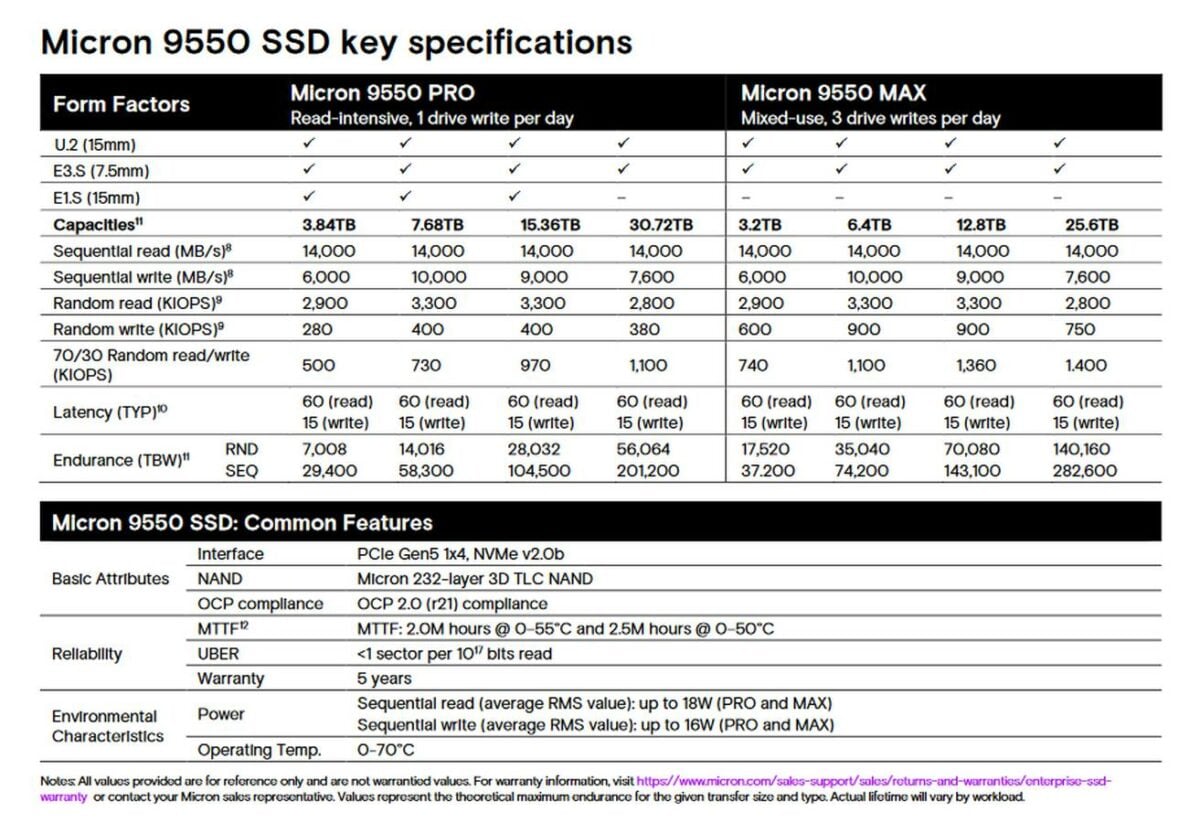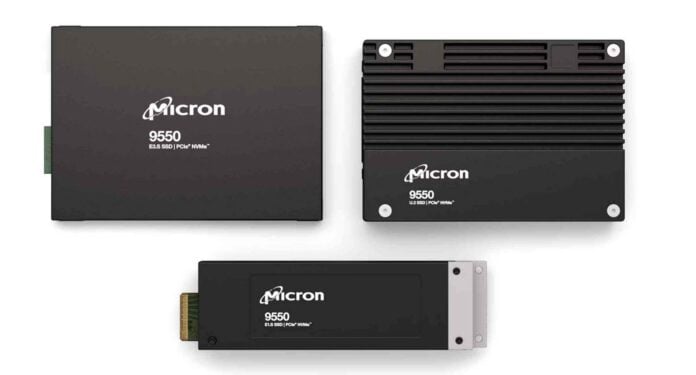Memory specialist Micron has announced the 9550 NVMe SSD series, targeting the enterprise and data centre market. Available in up to 30.72TB capacity, these drives offer some of the highest endurance figures alongside top-notch speeds.
The 9550 NVMe series comes in two variants: a Pro version targeting read-intensive tasks and a Max model for mixed-use and intensive workloads. These will be available in three formats: U.2 (15mm), E3.S (7.5mm), and E1.S (15mm), although the latter is exclusive to 9550 Pro.
Regardless of the format, the Pro lineup will come in 3.84TB, 7.68TB, 15.36TB, and 30.72TB capacities, with 3.2TB, 6.4TB, 12.8TB, and 25.6TB on the Max. The smaller capacity on the Max variants may be due to a larger over-provisioning portion, which would explain its much higher durability. Over-provisioning reserves a percentage of the drive’s capacity to increase speed and endurance.
Talking of which, Micron announces up to 56,064 TBW (Terabytes Written) for random and 201,200 TBW for sequential writes on the largest Pro model, with the Max pushing things much further up to 140,160 TBW for random and 282,600 TBW for sequential writes. More details can be found in the table below.

While these endurance figures are undoubtedly very impressive, the performance is even better. Micron claims this is “the world’s fastest data centre SSD,” with 14,000MB/s sequential read on all models, hitting the PCIe Gen 5 ceiling. Sequential write speeds even climb high as up to 10,000MB/s matches the best SSD out there. As for random access, we get up to 3,300,000 read IOPS and 900,000 write IOPS.
Though we may be tempted to compare it to BM1743 and its 61.44TB, Samsung’s model trades its sequential and random performance for higher capacity by using QLC (Quad-Level Cell) NAND instead of TLC (Triple-Level Cell). For this series, Micron opted for its 232-layer 3D TLC NAND coupled to a PCIe 5.0 controller supporting the NVMe 2.0b protocol.
While Micron didn’t indicate pricing for these drives, they are meant for data centres, so they won’t be cheap. Each is backed by a five-year warranty.
